Adresse
Infodoc : Réseau des bibliothèques et centres de documentation d'AgroParisTechFrance
contact

Catégories
Documents disponibles dans cette catégorie (97)
 Ajouter le résultat dans votre panier
Visionner les documents numériques
Faire une suggestion Affiner la recherche Interroger des sources externes
Ajouter le résultat dans votre panier
Visionner les documents numériques
Faire une suggestion Affiner la recherche Interroger des sources externes
 Thèse
Thèse
 Thèse
Thèse
 Thèse1 vol. (VII-159 p.)
Thèse1 vol. (VII-159 p.)
1 vol. (VII-159 p.)
 Thèse
Thèse
 Périodique
Périodique
 Thèse
Thèse
 Thèse1 vol. (pagination discontinue)
Thèse1 vol. (pagination discontinue)
1 vol. (pagination discontinue)
 Thèse1 vol. (114 p.)
Thèse1 vol. (114 p.)
1 vol. (114 p.)
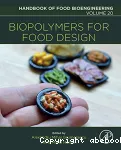 Livre
Livre978-0-12-811449-01 vol. (XXIV-513 p.)
1 vol. (XXIV-513 p.)ISBN : 978-0-12-811449-0 
 Périodique
Périodique
 Périodique
Périodique
 Périodique
Périodique0429-3312
ISBN : 0429-3312 
 Périodique
Périodique0373-5699
ISBN : 0373-5699 
 Périodique
Périodique
 Thèse1 vol. (249 p.)
Thèse1 vol. (249 p.)
1 vol. (249 p.)
 Thèse1 vol. (131-[46] p.)
Thèse1 vol. (131-[46] p.)
1 vol. (131-[46] p.)
 Thèse1 vol. (198 p.)
Thèse1 vol. (198 p.)
1 vol. (198 p.)
 Thèse1 vol. (185 p.)
Thèse1 vol. (185 p.)
1 vol. (185 p.)
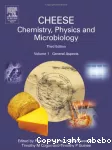 Livre90 EUR
Livre90 EUR978-0-12-263652-3XI-617 p.-8 p. de pl.
XI-617 p.-8 p. de pl.Prix : 90 EUR ISBN : 978-0-12-263652-3 
 Livre
Livre978-0-367-39006-81 vol. (532 p.)
1 vol. (532 p.)ISBN : 978-0-367-39006-8 
 Thèse1 vol. (pagination discontinue)
Thèse1 vol. (pagination discontinue)
1 vol. (pagination discontinue)
 Thèse
Thèse
 Thèse1 vol. (151 p.)
Thèse1 vol. (151 p.)
1 vol. (151 p.)
 Thèse1 vol. (166 p.)
Thèse1 vol. (166 p.)
1 vol. (166 p.)
 Thèse1 vol. (79-[19] p.)
Thèse1 vol. (79-[19] p.)
1 vol. (79-[19] p.)
 Thèse
Thèse
 Thèse1 vol. (241 p.)
Thèse1 vol. (241 p.)
1 vol. (241 p.)
 Thèse1 vol. (146 p.)
Thèse1 vol. (146 p.)
1 vol. (146 p.)
 Thèse
Thèse
 Thèse1 vol. (32 p.)
Thèse1 vol. (32 p.)
1 vol. (32 p.)
 Thèse1 vol. ([96] p.)
Thèse1 vol. ([96] p.)
1 vol. ([96] p.)
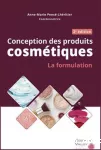 Livre45 EUR
Livre45 EUR978-2-490-63900-71 vol. (XV-383 p.)
1 vol. (XV-383 p.)Prix : 45 EUR ISBN : 978-2-490-63900-7 
 Thèse1 vol. (203 p.)
Thèse1 vol. (203 p.)
1 vol. (203 p.)
 Thèse1 vol. (232 p.)
Thèse1 vol. (232 p.)
1 vol. (232 p.)
 Thèse1 vol. (182 p.)
Thèse1 vol. (182 p.)
1 vol. (182 p.)
 Thèse1 vol. (169-VI p.)
Thèse1 vol. (169-VI p.)
1 vol. (169-VI p.)
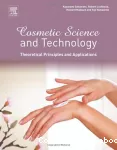 Livre
Livre978-0-12-802005-01 vol. (XVII-835 p.)
1 vol. (XVII-835 p.)ISBN : 978-0-12-802005-0 
 Thèse1 vol. (pagination discontinue)
Thèse1 vol. (pagination discontinue)
1 vol. (pagination discontinue)
 Thèse1 vol. (VII-187 p. - pagination multiple)
Thèse1 vol. (VII-187 p. - pagination multiple)
1 vol. (VII-187 p. - pagination multiple)
 Thèse1 vol. (168 p.)
Thèse1 vol. (168 p.)
1 vol. (168 p.)
 Livre
Livre978-0-12-227235-64 vol. ([240]-2799 p.)
4 vol. ([240]-2799 p.)ISBN : 978-0-12-227235-6 
 Thèse1 vol. (215 p.)
Thèse1 vol. (215 p.)
1 vol. (215 p.)
 Thèse1 vol. (pagination multiple)
Thèse1 vol. (pagination multiple)
1 vol. (pagination multiple)
 Thèse1 vol. (pagination discontinue)
Thèse1 vol. (pagination discontinue)
1 vol. (pagination discontinue)
 Thèse1 vol. (165-[13] p.)
Thèse1 vol. (165-[13] p.)
1 vol. (165-[13] p.)
 Thèse1 vol. (210 p.)
Thèse1 vol. (210 p.)
1 vol. (210 p.)
 Thèse
Thèse
 Thèse1 vol. (250 p.)
Thèse1 vol. (250 p.)
1 vol. (250 p.)
 Thèse1 vol. (161 p.)
Thèse1 vol. (161 p.)
1 vol. (161 p.)
 Thèse1 vol. (pagination discontinue)
Thèse1 vol. (pagination discontinue)
1 vol. (pagination discontinue)
 Thèse
Thèse
 Livre
Livre978-0-12-814217-21 vol. (XXII-860 p.)
1 vol. (XXII-860 p.)ISBN : 978-0-12-814217-2 
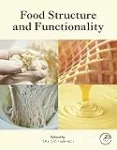 Livre
Livre978-0-12-821453-41 vol. (XIII-253 p.)
1 vol. (XIII-253 p.)ISBN : 978-0-12-821453-4 
 Thèse1 vol. (198 p.)
Thèse1 vol. (198 p.)
1 vol. (198 p.)
 Thèse1 vol. (269 p.)
Thèse1 vol. (269 p.)
1 vol. (269 p.)
 Thèse1 vol. (221 p.)
Thèse1 vol. (221 p.)
1 vol. (221 p.)
 Thèse1 vol. (172 p.)
Thèse1 vol. (172 p.)
1 vol. (172 p.)
 Thèse1 vol. (334 p.)
Thèse1 vol. (334 p.)
1 vol. (334 p.)
 Thèse1 vol. (188 p.)
Thèse1 vol. (188 p.)
1 vol. (188 p.)
 Thèse1 vol. (180-[14]p.)
Thèse1 vol. (180-[14]p.)
1 vol. (180-[14]p.)
 Livre
Livre978-1-84973-883-51 vol. (XV-388 p.)
1 vol. (XV-388 p.)ISBN : 978-1-84973-883-5 
 Livre
Livre978-0-12-820104-61 vol. (XXIII-1166 p.)
1 vol. (XXIII-1166 p.)ISBN : 978-0-12-820104-6 
 Thèse1 vol. (79 p. - pagination multiple)
Thèse1 vol. (79 p. - pagination multiple)
1 vol. (79 p. - pagination multiple)
 Thèse1 vol. (184 p.)
Thèse1 vol. (184 p.)
1 vol. (184 p.)
 Thèse1 vol. (198 p.)
Thèse1 vol. (198 p.)
1 vol. (198 p.)
 Livre
Livre978-2-7462-4870-01 vol. (VIII-168 p.)
1 vol. (VIII-168 p.)ISBN : 978-2-7462-4870-0 
 Thèse1 vol. (140 p. - pagination multiple)
Thèse1 vol. (140 p. - pagination multiple)
1 vol. (140 p. - pagination multiple)
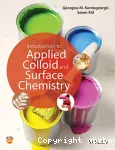 Livre
Livre978-1-118-88118-71 vol. (XIX-367 p.)
1 vol. (XIX-367 p.)ISBN : 978-1-118-88118-7 
 Périodique
Périodique0148-6055
ISBN : 0148-6055 
 Livre430 F
Livre430 F978-2-85978-093-71 vol. (402 p.)
1 vol. (402 p.)Prix : 430 F ISBN : 978-2-85978-093-7 
 Livre55 EUR
Livre55 EUR978-2-7430-2249-51 vol. (XV-382 p.)
1 vol. (XV-382 p.)Prix : 55 EUR ISBN : 978-2-7430-2249-5 
 Livre69 EUR
Livre69 EUR978-2-85206-928-21 vol. (XXIX-513 p.)
1 vol. (XXIX-513 p.)Prix : 69 EUR ISBN : 978-2-85206-928-2 
 Thèse
Thèse
 Thèse1 vol. (175 p.)
Thèse1 vol. (175 p.)
1 vol. (175 p.)
 Thèse
Thèse
 Thèse1 vol. (pagination discontinue)
Thèse1 vol. (pagination discontinue)
1 vol. (pagination discontinue)
 Thèse1 vol. (108 p.)
Thèse1 vol. (108 p.)
1 vol. (108 p.)
 Thèse1 vol. (VIII-210 p.)
Thèse1 vol. (VIII-210 p.)
1 vol. (VIII-210 p.)
 Thèse
Thèse
 Thèse1 vol. (251-[10] p.)
Thèse1 vol. (251-[10] p.)
1 vol. (251-[10] p.)
 Thèse
Thèse
 Thèse1 vol. (129-[49] p.)
Thèse1 vol. (129-[49] p.)
1 vol. (129-[49] p.)
 Thèse1 vol. (198 p. - pagination multiple)
Thèse1 vol. (198 p. - pagination multiple)
1 vol. (198 p. - pagination multiple)
 Thèse1 vol. (pagination discontinue)
Thèse1 vol. (pagination discontinue)
1 vol. (pagination discontinue)


 Périodique
Périodique
 Livre39 EUR
Livre39 EUR978-2-7430-0510-81 vol. (XIV-199 p.)
1 vol. (XIV-199 p.)Prix : 39 EUR ISBN : 978-2-7430-0510-8 
 Livre
Livre978-3-9504016-4-61 vol. (192 p.)
1 vol. (192 p.)ISBN : 978-3-9504016-4-6 
 Mémoire
Mémoire
 Livre
Livre
 Livre
Livre
 Thèse1 vol. (76-[69] p.)
Thèse1 vol. (76-[69] p.)
1 vol. (76-[69] p.)
 Périodique
Périodique
 PériodiqueLondon ; New York : Published by Pergamon Press for the British Society of Rheology ; 1958-2013 1958-2013
PériodiqueLondon ; New York : Published by Pergamon Press for the British Society of Rheology ; 1958-2013 1958-20130035-452X
ISBN : 0035-452X 
 Livre
Livre978-3-030-27133-61 vol. (IX-413 p.)
1 vol. (IX-413 p.)ISBN : 978-3-030-27133-6 
 Thèse1 vol. (362 p.)
Thèse1 vol. (362 p.)
1 vol. (362 p.)
 Thèse1 vol. (184 p.)
Thèse1 vol. (184 p.)
1 vol. (184 p.)





